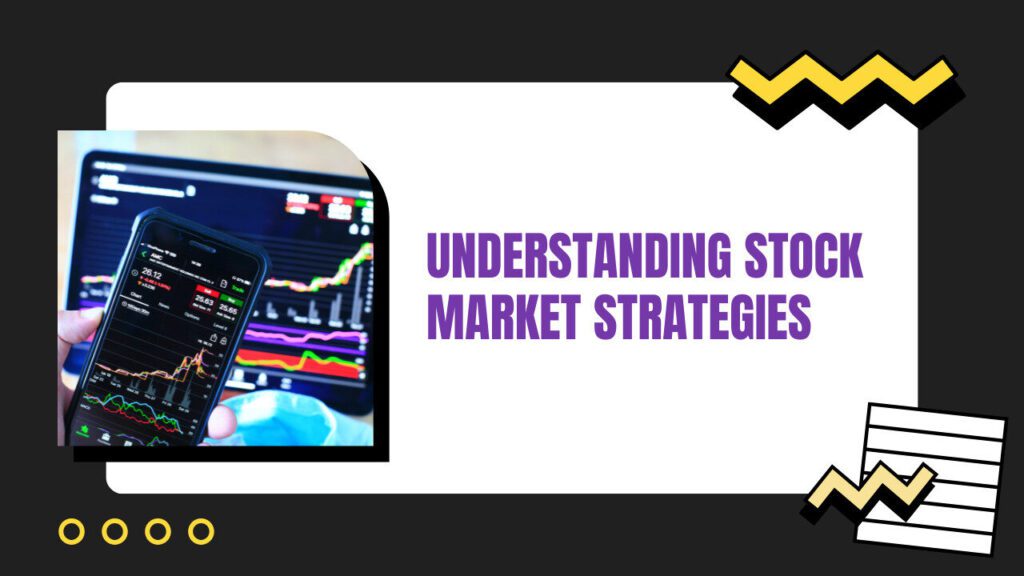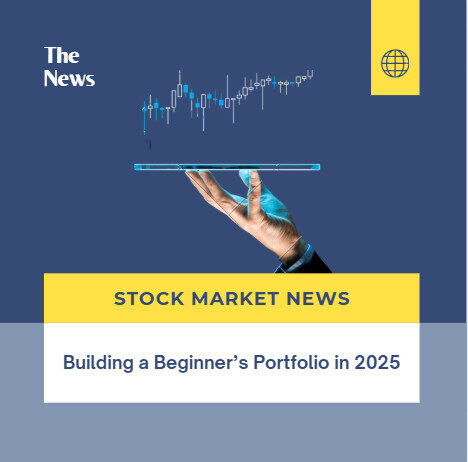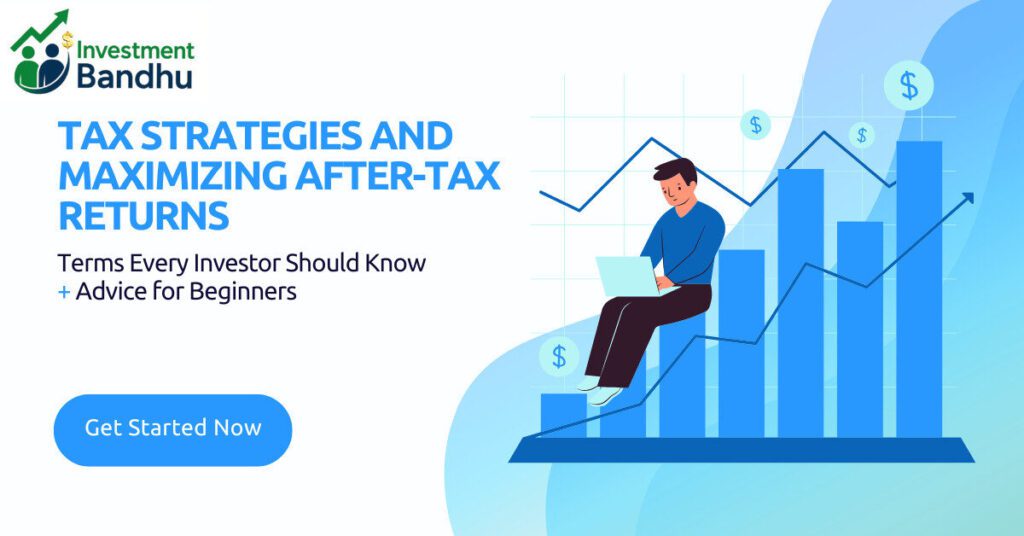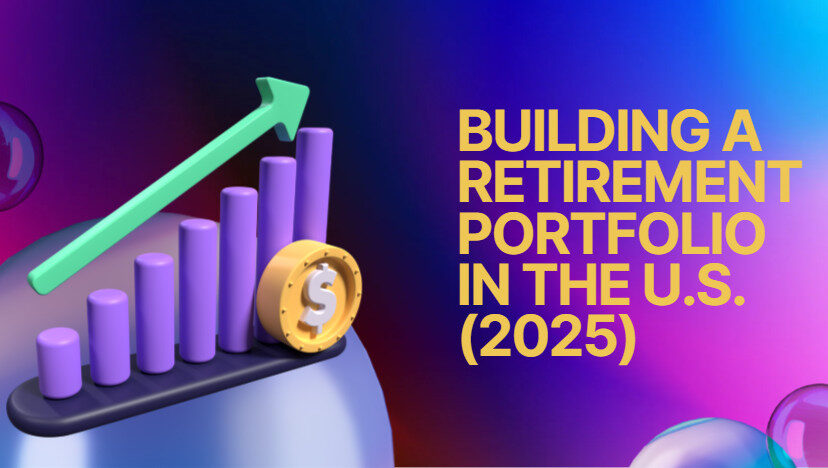
Discover how to start investing in the U.S. stock market in 2025. From beginner basics to long-term wealth-building strategies, this comprehensive guide helps you build confidence and make smart investment decisions. For decades, investing in the U.S. stock market has symbolized financial growth, freedom, and the chance to build lasting wealth. In 2025, the market remains a central driver of opportunity. Despite global uncertainties, technological revolutions, and shifting consumer behaviors, the U.S. market continues to be one of the most resilient and dynamic investment landscapes in the world.
For new investors, however, the stock market can feel overwhelming. The terms sound complex. Charts look intimidating. And stories of sudden crashes or overnight millionaires make it seem like a game of chance. But here’s the truth: successful investing is not gambling—it’s strategy, patience, and discipline.
If you’re ready to start your journey into the U.S. stock market in 2025, this guide will walk you step by step. Whether you’re a young professional, a retiree exploring growth opportunities, or someone simply curious about building wealth, you’ll find the tools, mindset, and strategies to start with confidence.

Part 1: Understanding the Basics
1.1 What is the Stock Market?
At its core, the stock market is a place where ownership in companies is bought and sold. Each share represents a slice of ownership. When you own stock in a company, you essentially own a piece of that business—and benefit when it grows.
The U.S. stock market is made up of major exchanges such as the New York Stock Exchange (NYSE) and Nasdaq, where thousands of companies are listed.
Think of it as the world’s largest marketplace—but instead of fruits or clothes, the products are shares of businesses like Apple, Tesla, or Coca-Cola.

1.2 Why Invest in Stocks?
- Wealth Growth – Historically, stocks have outperformed most other asset classes over the long term.
- Ownership – You become part of America’s most powerful companies.
- Dividends – Some companies pay part of their profits directly to shareholders.
- Compound Returns – Reinvested gains multiply wealth exponentially.
Imagine planting a tree today. With consistent care, it grows taller and gives shade, fruit, and wood. That’s what stock investing does for your money—it grows over time.
1.3 Key Market Players
- Investors – Individuals like you and me buying and selling shares.
- Companies – Businesses listing shares to raise money.
- Brokers – Platforms connecting investors to the market.
- Market Makers – Institutions ensuring smooth transactions.
- Regulators – Organizations ensuring fairness.
1.4 Stock Types You Should Know
- Common Stocks – Basic ownership with voting rights.
- Preferred Stocks – Fixed dividends, less voting power.
- Growth Stocks – Focus on expansion, reinvest earnings.
- Dividend Stocks – Regular income payouts.
- Blue-Chip Stocks – Established, stable companies.
- Penny Stocks – High-risk, low-priced shares.
Each type carries unique risks and rewards. A balanced approach often blends several categories.

Part 2: Preparing Yourself to Invest
2.1 Setting Financial Foundations
Before investing, ask: “Am I financially ready?”
- Do you have an emergency fund (3–6 months of expenses)?
- Are you paying off high-interest debt (like credit cards)?
- Do you have a steady income?
Investing works best when your foundation is stable. You don’t want to pull money out at the wrong time because of an unexpected bill.
2.2 Defining Your Investment Goals
What are you investing for?
- Retirement?
- Buying a home?
- Children’s education?
- Wealth accumulation?
Clear goals shape your strategy. A retiree needs stability and income, while a 25-year-old may focus on long-term growth.
2.3 Risk Tolerance
Your personality matters. Some people lose sleep over a 5% drop, while others see it as a buying opportunity. Risk tolerance combines your emotional comfort and financial ability to withstand losses.
- Conservative Investor: Prefers safer, dividend-paying stocks.
- Moderate Investor: Balances growth and safety.
- Aggressive Investor: Chases high growth, accepts volatility.
2.4 Time Horizon
The length of time you plan to invest influences your choices.
- Short-Term (1–3 years): Lower risk, avoid high-volatility stocks.
- Medium-Term (3–10 years): Mix of growth and safety.
- Long-Term (10+ years): Focus on growth and compounding.

Part 3: Getting Started in 2025
3.1 Choosing a Brokerage
To invest, you need a brokerage account. This is your “gateway” to the market. In 2025, brokerages are more user-friendly than ever, offering apps, fractional shares, and commission-free trading.
When choosing, consider:
- Fees – Low or zero commissions.
- Ease of Use – Simple platforms if you’re a beginner.
- Research Tools – Charts, analysis, education.
- Fractional Shares – Buy part of a stock instead of a whole share.
- Retirement Accounts – Options like IRAs or 401(k) rollovers.
3.2 How Much Money Do You Need?
The myth: you need thousands to start.
The truth: you can start with as little as $10 thanks to fractional investing.
The key is consistency, not lump sums. $200 invested monthly grows dramatically over decades through compounding.
3.3 First Steps: Placing Your Trade
When you buy your first stock, you’ll choose between:
- Market Order: Buy immediately at current price.
- Limit Order: Buy only if stock hits a specific price.
- Stop Order: Triggers a buy/sell when stock moves past a level.
For beginners, market orders are simple, but limit orders provide more control.

Part 4: Understanding Stock Market Strategies
Investing in the stock market is not a one-size-fits-all journey. Every investor has a different personality, goal, time horizon, and risk appetite. The beauty of the U.S. stock market is that it offers multiple paths to wealth, but the challenge lies in choosing the one that fits you.
Some people thrive on long-term patience, while others love the daily excitement of short-term trades. Some prefer building passive income streams, while others are obsessed with growth potential. Let’s explore the major strategies you need to understand before you dive in.
4.1 Buy and Hold Strategy
This is the simplest and most powerful approach for beginners and long-term investors.
- Definition: You buy stocks (often in solid companies or broad index funds) and hold them for years, sometimes decades.
- Philosophy: The market may fluctuate day-to-day, but over time, it trends upward.
- Example: Buying shares of Apple or Microsoft in 2010 and holding until 2025 would have multiplied your money many times over.
Pros:
- Minimal stress, little need to monitor daily.
- Takes advantage of compounding.
- Lower trading fees and tax efficiency.
Cons:
- Requires patience.
- Difficult to sit through downturns without panic.
👉 If you’re new in 2025, buy-and-hold is often the wisest entry point.
4.2 Dividend Investing
This strategy focuses on companies that pay regular dividends—cash payments distributed from profits.
- Objective: Build a portfolio that generates steady income.
- Popular Sectors: Utilities, consumer staples, banks, healthcare.
- Why it works: Even if stock prices fall, dividend checks keep coming.
Example: A $20,000 investment in a company with a 4% dividend yield pays $800 annually. Reinvest those dividends, and your portfolio grows faster.
Pros:
- Passive income stream.
- Less volatility in many dividend-paying companies.
- Ideal for retirement planning.
Cons:
- Lower growth potential compared to high-growth stocks.
- Companies can cut dividends during crises.
4.3 Growth Investing
Growth investors chase companies with the potential for massive expansion.
- Examples in 2025: AI companies, renewable energy firms, biotech innovators.
- Philosophy: Sacrifice short-term stability for long-term explosive growth.
Pros:
- Potential for high returns.
- Invest in “the future” of industries.
Cons:
- Higher risk and volatility.
- Not every growth story succeeds (many start-ups fail).
Growth investing is exciting, but beginners must balance it with safer stocks to avoid heavy losses.
4.4 Value Investing
Popularized by Warren Buffett, this strategy seeks undervalued companies—stocks trading below their “true” worth.
- Method: Analyze financial statements, earnings, debt, and compare to stock price.
- Mindset: “Buy $1 for 70 cents.”
- Example: During market downturns, strong companies may be temporarily mispriced.
Pros:
- Margin of safety—buying cheap reduces downside risk.
- Long history of success (Buffett, Benjamin Graham).
Cons:
- Requires deep research.
- Can take years for undervalued stocks to rise.
4.5 Index Fund & ETF Investing
For those who don’t want to pick individual stocks, index funds and ETFs (Exchange-Traded Funds) are lifesavers.
- Definition: A basket of stocks you buy as one investment, often tracking an index like the S&P 500.
- Philosophy: Don’t beat the market—be the market.
- Example: Buying an S&P 500 ETF gives you exposure to 500 of America’s largest companies in one click.
Pros:
- Diversification.
- Low fees.
- Great for beginners.
Cons:
- You won’t outperform the market—returns mirror overall performance.
4.6 Dollar-Cost Averaging (DCA)
Instead of investing a lump sum, you invest a fixed amount regularly (e.g., $500 every month).
- Why it works: Removes emotion and market timing attempts.
- Benefit: You buy more shares when prices are low, fewer when high. Over time, this averages out.
👉 For beginners in 2025, DCA is one of the safest ways to build wealth steadily.
4.7 Swing Trading
Unlike long-term investing, swing traders look for short- to medium-term price movements.
- Timeframe: Days to weeks.
- Tools Used: Technical analysis (charts, patterns, indicators).
- Goal: Profit from short-term swings in stock prices.
Pros:
- Quicker profits.
- More opportunities compared to long-term holding.
Cons:
- Requires time, knowledge, and discipline.
- Risk of losses if market moves against you.
4.8 Day Trading
Day trading is the most extreme active strategy.
- Definition: Buying and selling stocks within the same day, closing all positions before markets close.
- Objective: Profit from tiny intraday price moves.
Pros:
- Fast gains possible.
- No overnight risk.
Cons:
- Extremely risky, high failure rate.
- Requires full-time attention, advanced knowledge, and strong emotional control.
👉 For beginners in 2025, day trading is usually not recommended. It’s more speculation than investing.
4.9 Sector & Thematic Investing
Rather than buying a mix of companies across industries, some investors focus on themes or sectors.
- Themes in 2025: Artificial intelligence, green energy, space technology, healthcare innovation.
- Why it attracts investors: Big trends create winners.
Pros:
- Potential to ride future growth waves.
- Aligns with personal beliefs (e.g., sustainable investing).
Cons:
- Higher concentration risk.
- Trends can fade or be overhyped.
4.10 Defensive vs. Aggressive Approaches
- Defensive Investing: Focuses on safe, stable companies, bonds, and dividend stocks.
- Aggressive Investing: Pursues maximum growth, often tech startups or volatile sectors.
Neither is “right” or “wrong”—it depends on your personality and goals.
4.11 Mixing Strategies
Here’s the truth: most successful investors don’t stick to one strategy. They blend approaches.
- Core: Index funds for safety.
- Satellite: Growth or sector picks for excitement.
- Dividend stocks: For passive income.
- Cash reserves: To buy more during downturns.
This “core-satellite” strategy balances stability and growth.
4.12 Case Study: Beginner Portfolio in 2025
Imagine you’re a 30-year-old starting with $10,000. Here’s a balanced approach:
- 50% S&P 500 Index Fund (broad U.S. market exposure)
- 20% Dividend Stocks (income + stability)
- 20% Growth Stocks (AI, renewable energy, biotech)
- 10% Cash (to buy dips or for emergencies)
With this setup, you’re covered for long-term growth while still having a safety net.

Part 5: Building a Beginner’s Portfolio in 2025
Investing feels overwhelming when you first begin. Do you buy Apple stock? Jump on an AI startup? Load up on index funds? The key is structure. A beginner’s portfolio is like the foundation of a house—it doesn’t need to be flashy, but it must be strong enough to weather storms.
In 2025, with inflation pressures, rising interest rates, and volatile global markets, your portfolio must balance growth, stability, and flexibility.
Let’s break down how to build one step by step.
5.1 Know Your Starting Point
Before you choose investments, you need to answer three questions:
- How much money are you starting with?
- $500? $5,000? $50,000? Your starting amount affects how much diversification you can achieve.
- What’s your time horizon?
- Short term (1–3 years): You’ll need safer, liquid investments.
- Medium term (5–10 years): Balance of growth and stability.
- Long term (10+ years): Aggressive growth potential.
- What’s your risk tolerance?
- Can you handle seeing your portfolio drop 20% without panic? Or do you prefer safety over big gains?
👉 Without clarity here, you’re just throwing darts at a board.
5.2 The Building Blocks of a Portfolio
A good beginner portfolio usually includes these components:
- Stocks (Individual or Funds): The engine of growth.
- Bonds or Fixed Income: Provides stability and reduces volatility.
- Cash or Cash Equivalents: For emergencies and buying opportunities.
- Optional Alternatives: REITs (real estate), commodities, or thematic ETFs for diversification.
Think of it like a meal: stocks are the main course, bonds are the side dish, and cash is the water.
5.3 The 60/40 Classic Portfolio
One of the most time-tested portfolio models is the 60/40 rule:
- 60% Stocks
- 40% Bonds
It’s balanced enough for growth while cushioning downturns. In 2025, however, some investors tweak this to 70/30 (for more growth) or 50/50 (for more safety), depending on goals.
5.4 Step-by-Step Beginner Portfolio (Example: $10,000 Starting Capital)
Here’s how a U.S. beginner might structure their first portfolio:
- 50% Index Funds or ETFs ($5,000)
- Example: S&P 500 ETF, Total U.S. Market ETF
- Purpose: Instant diversification, low-cost growth.
- 20% Dividend Stocks ($2,000)
- Example: Utility companies, consumer staples, big banks.
- Purpose: Steady income + long-term stability.
- 20% Growth Stocks ($2,000)
- Example: AI companies, clean energy firms, biotech.
- Purpose: Higher risk but strong growth potential.
- 10% Cash or High-Yield Savings ($1,000)
- Purpose: Emergency buffer and flexibility to “buy the dip.”
5.5 Portfolio Allocation by Age
As a rule of thumb, younger investors can take more risks, while older investors prioritize safety.
- In Your 20s and 30s:
- 80% Stocks, 20% Bonds/Cash
- Why: You have decades to recover from downturns.
- In Your 40s and 50s:
- 60% Stocks, 30% Bonds, 10% Cash
- Why: Closer to retirement, so balance growth with safety.
- In Your 60s and Beyond:
- 40% Stocks, 50% Bonds, 10% Cash
- Why: Protect wealth while still beating inflation.
5.6 Dollar-Cost Averaging (DCA) Into Your Portfolio
Instead of dumping $10,000 in at once, you could invest $1,000 per month over 10 months.
- This reduces the risk of bad timing.
- Builds consistency.
- Especially useful in 2025 with market uncertainty.
5.7 Mistakes Beginners Must Avoid
- Chasing the hottest stock.
- If everyone’s talking about it, you’re probably late.
- Ignoring diversification.
- Putting all your money in one company is gambling, not investing.
- Overtrading.
- Constant buying and selling racks up fees and taxes.
- Neglecting cash reserves.
- Emergencies happen—don’t lock up 100% of your funds.
- Not rebalancing.
- If one asset grows too large, rebalance back to target percentages annually.
5.8 Advanced Tweaks for 2025 Beginners
Once you’re comfortable, you can experiment with small allocations (5–10%) in:
- REITs (Real Estate Investment Trusts): Earn rental income without buying property.
- Sector ETFs: Focus on AI, healthcare, green energy.
- International ETFs: Exposure to global markets beyond the U.S.
But keep your core portfolio simple. Complexity is not necessary to build wealth.
5.9 A Beginner Portfolio in Action (Case Study)
Let’s imagine Emma, a 28-year-old professional in New York with $15,000 to invest in 2025.
Her plan:
- $7,500 in an S&P 500 ETF
- $3,000 in Dividend Stocks
- $3,000 in Growth Stocks (AI, EV, biotech)
- $1,500 in Cash
Fast-forward 10 years:
- Her portfolio benefits from both growth and stability.
- Dividends reinvested compound returns.
- Cash allowed her to buy during downturns.
Emma didn’t panic during crashes—she stuck to her plan. That’s the real “secret” of investing.
5.10 The Psychology of a Beginner Portfolio
The numbers matter, but your mindset matters more.
- Don’t check your portfolio daily.
- Accept that downturns are normal.
- Think in decades, not days.

Part 6: Risk Management and Protecting Your Investments
6.1 Why Risk Management Matters
Most beginners think investing is only about finding the “right stock” — but the truth is, a solid risk management plan often determines long-term success.
- Anyone can make money in a bull market.
- The real challenge is surviving downturns without panic or total losses.
- Smart investors accept risk, prepare for it, and manage it, instead of trying to avoid it altogether.
Risk management doesn’t kill growth — it protects your growth.
6.2 The Main Risks You Face in 2025
- Market Volatility
- Stock prices swing daily due to news, interest rates, and global events.
- Example: AI hype pushes stocks up fast, but a regulation announcement can cause sudden drops.
- Inflation Risk
- Even if your money grows, inflation eats away at real value.
- In 2025, inflation in the U.S. is still higher than pre-2020 averages.
- Interest Rate Risk
- Higher interest rates affect borrowing, mortgages, and stock valuations.
- They also impact bonds — making existing ones less valuable.
- Company-Specific Risk
- A single company can collapse (think Enron, Lehman Brothers, or recent startups gone bankrupt).
- Currency & Geopolitical Risk
- Global investors face dollar fluctuations, trade wars, and political tensions.
- Behavioral Risk
- The biggest threat isn’t the market… it’s often you. Panic selling, greed, and impatience destroy portfolios.
6.3 Diversification: Your First Shield
The golden rule: “Don’t put all your eggs in one basket.”
Diversify by Asset Class
- Stocks: Growth engine.
- Bonds: Safety + steady income.
- Cash: Flexibility for emergencies.
- REITs / Alternatives: Extra diversification.
Diversify by Sector
- Tech, healthcare, energy, consumer staples, financials, etc.
- If one sector crashes, others may hold steady.
Diversify by Geography
- U.S. dominates global markets, but adding international exposure reduces U.S.-specific risks.
👉 Example: A balanced portfolio may hold U.S. S&P 500 ETF + an International ETF + a Bond ETF.
6.4 Position Sizing: Don’t Bet the Farm
Position sizing means deciding how much of your portfolio to put into a single investment.
- Conservative rule: Never invest more than 5% in one stock.
- Aggressive investors may go up to 10%, but beginners should stay safer.
- Keep a “core” of 70–80% in diversified ETFs, and a “satellite” of 20–30% in individual stocks.
This way, even if one company collapses, your entire portfolio doesn’t.
6.5 Emergency Fund: Your Hidden Armor
Before you even buy your first stock, you need 3–6 months of living expenses in cash or a high-yield savings account.
Why?
- If you lose your job or face medical bills, you won’t need to sell stocks at a loss.
- It gives peace of mind and reduces panic in downturns.
Many beginners skip this step — and regret it later.
6.6 Rebalancing: Keeping Your Portfolio Healthy
Over time, winners grow bigger and losers shrink. That skews your risk.
Example:
- You start with 60% stocks and 40% bonds.
- After a year, stocks boom — now you’re at 75% stocks and 25% bonds.
- That means you’re taking more risk than planned.
Solution: Rebalance once or twice a year.
- Sell a little of what went up (stocks).
- Buy more of what went down (bonds or cash).
It feels counterintuitive, but it locks in profits and maintains balance.
6.7 Stop-Losses & Exit Plans
For higher-risk stocks, you can set stop-loss orders:
- Example: Buy a stock at $50. Set a stop-loss at $40.
- If it falls to $40, it automatically sells — limiting your loss.
But use this carefully. Long-term investors don’t always need stop-losses. They’re better for traders or highly volatile stocks.
6.8 Hedging Against Inflation
Inflation silently erodes wealth. In 2025, the U.S. is still adjusting to post-pandemic inflation cycles.
Ways to protect yourself:
- Stocks: Historically outpace inflation long-term.
- TIPS (Treasury Inflation-Protected Securities): Adjust with inflation.
- Real Assets (REITs, Commodities): Often rise when prices rise.
A portfolio with a mix of growth and inflation-protected assets helps maintain real purchasing power.
6.9 Avoiding Behavioral Traps
Even the best plan fails if emotions take over. Common traps:
- Panic Selling: Selling at the bottom during crashes.
- Greed Buying: Chasing hype at the top.
- Overconfidence: Believing you’re smarter than the market.
- Paralysis by Analysis: Waiting too long and missing opportunities.
✅ Fix:
- Automate investments (Dollar-Cost Averaging).
- Stick to written rules.
- Check your portfolio monthly, not daily.
6.10 Insurance & Wealth Protection
Investing is only one part of financial security. Protect your portfolio with:
- Health Insurance: Medical debt is a major risk in America.
- Life Insurance (if you have dependents): Ensures family stability.
- Disability Insurance: Covers income if you can’t work.
Wealth building is fragile without protection.
6.11 Case Study: Two Investors in a Crash
- Alex: Invested $20,000 in tech stocks only. In a downturn, his portfolio fell 50% — he panicked, sold everything, and locked in losses.
- Maya: Invested $20,000 but split across index funds, bonds, and cash. In the crash, her portfolio fell only 20%. She used her cash to buy more at lower prices. Three years later, she doubled her returns.
👉 The difference wasn’t luck — it was risk management.
6.12 The Long-Term Mindset
Remember: There is no investment without risk.
But with proper protection — diversification, emergency funds, rebalancing, and discipline — risk becomes manageable.

Part 7: Tax Strategies and Maximizing After-Tax Returns
7.1 Why Taxes Matter in Investing
A beginner often focuses only on “gross returns.” If a stock grows 12%, they celebrate. But what really matters is net returns after taxes.
For example:
- You earn $5,000 in stock gains.
- At a 20% capital gains tax rate, you only keep $4,000.
- That 1,000 difference could compound over decades.
👉 Smart investors structure their accounts, timing, and strategies to legally minimize tax leakage.
7.2 Types of Investment Taxes in the U.S.
Before managing taxes, you must know what you’re paying for. In 2025, the key taxes affecting investors include:
- Capital Gains Tax
- Short-term (less than 1 year): Taxed as regular income (up to 37%).
- Long-term (1+ year): Taxed at 0%, 15%, or 20% depending on your income bracket.
- Dividend Tax
- Qualified dividends: Lower rates (same as long-term gains).
- Non-qualified dividends: Taxed as ordinary income.
- Interest Income Tax
- Bonds, CDs, and savings account interest are taxed at normal income rates.
- Net Investment Income Tax (NIIT)
- High earners (>$200k individual, $250k couple) pay an additional 3.8% on investment income.
7.3 Tax-Advantaged Accounts: Your First Line of Defense
The U.S. system gives you tools to legally shelter investments from taxes.
Individual Retirement Accounts (IRAs)
- Traditional IRA: Contributions may be tax-deductible; growth is tax-deferred; withdrawals taxed as income.
- Roth IRA: Contributions after-tax; growth and withdrawals tax-free.
401(k) Plans (Employer Sponsored)
- Contributions are pre-tax, lowering taxable income.
- Growth is tax-deferred until withdrawal.
- Some employers match contributions — free money.
Health Savings Accounts (HSAs)
- Triple tax benefit: tax-deductible contributions, tax-free growth, and tax-free withdrawals for medical expenses.
👉 In 2025, contribution limits have risen slightly due to inflation adjustments, making these accounts even more powerful.
7.4 The Power of Asset Location
Think of asset location as the “where” of investing, not just the “what.”
- Tax-efficient investments (index funds, ETFs, qualified dividend stocks) → place in taxable brokerage accounts.
- Tax-inefficient investments (bonds, REITs, high-dividend stocks) → place in IRAs or 401(k)s.
This way, you shelter income-heavy assets inside tax-protected accounts while letting efficient ones sit outside.
7.5 Capital Gains Timing: Patience Pays
Taxes reward patience.
Example:
- You buy stock at $10,000.
- After 11 months, it’s worth $12,000. Selling now → $2,000 taxed as short-term (say 30% = $600 tax).
- If you wait just 1 more month → taxed as long-term (15% = $300 tax).
👉 Simply holding for 1 extra month saved $300. Multiply this over years, and it becomes huge.
7.6 Tax-Loss Harvesting: Turning Losses into Assets
Even losses can be valuable.
- Sell a stock at a loss → offset gains from other stocks.
- If losses exceed gains, up to $3,000 can offset regular income.
- Remaining losses carry forward to future years.
Example:
- You lose $5,000 on one stock but gain $5,000 on another.
- Without tax-loss harvesting → full $5,000 gain is taxable.
- With harvesting → gains and losses cancel → $0 taxable.
7.7 Dividend Management
Not all dividends are equal.
- Qualified dividends (from most U.S. companies) → lower rates.
- Non-qualified dividends (some REITs, certain foreign companies) → higher rates.
👉 Smart investors prefer tax-efficient dividend ETFs in taxable accounts and place high-dividend assets inside tax-sheltered accounts.
7.8 State Taxes: The Forgotten Bite
Beyond federal taxes, state taxes matter.
- Some states (Florida, Texas, Nevada) have no state income tax.
- Others (California, New York) can add 8–13% to your bill.
Example:
- A New Yorker paying 20% federal capital gains + 10% state = 30% effective rate.
- A Floridian pays only 20%.
Where you live changes your net returns dramatically.
7.9 Don’t Forget Inheritance & Estate Planning
Even beginners should be aware: large portfolios eventually face estate taxes.
- The federal exemption is over $12 million in 2025, but future laws may lower it.
- Proper planning (trusts, gifting, Roth conversions) can protect family wealth.
7.10 Behavioral Tax Mistakes to Avoid
- Frequent Trading → triggers short-term gains (higher taxes).
- Ignoring Tax Shelters → losing free advantages.
- Panic Selling in a Loss Year → creating taxable events unnecessarily.
- Not Planning Withdrawals → pulling from the wrong account first in retirement.
7.11 Case Study: Two Investors
- Emma (Tax-Smart Investor):
- Uses a Roth IRA for growth stocks.
- Places bonds in a Traditional IRA.
- Keeps index ETFs in taxable accounts.
- Harvests losses annually.
- After 20 years, her after-tax portfolio is worth $800,000.
- Jake (Tax-Blind Investor):
- Buys and sells frequently in taxable accounts.
- Keeps dividend stocks outside IRAs.
- Ignores loss harvesting.
- After 20 years, his after-tax portfolio is worth only $600,000.
👉 Same market, same returns, but Emma kept $200,000 more simply by playing smarter with taxes.
7.12 The Long View
In investing, taxes are like gravity. You can’t avoid them, but you can reduce their pull.
The best strategy is a layered approach:
- Use tax-advantaged accounts first.
- Place assets wisely based on tax efficiency.
- Time your sales to optimize capital gains treatment.
- Harvest losses when the market gives you lemons.
Over decades, these small moves stack up into massive differences in wealth.

Part 8: Advanced Investment Strategies for U.S. Investors in 2025
8.1 The Mindset Before Going Advanced
Before we jump into complex strategies, remember this:
- Advanced doesn’t mean “better” for everyone.
- Risk and reward scale together.
- Only use advanced tools once you have a stable core portfolio (index funds, retirement accounts, cash emergency fund).
Think of these strategies as “spices” to add flavor — not the entire meal.
8.2 Options Trading: Beyond Buy and Hold
Options give you the right (but not obligation) to buy or sell a stock at a certain price before a certain date.
Two Common Types:
- Call Options: Bet that a stock will rise.
- Put Options: Bet that a stock will fall.
Example:
Apple stock is $180.
- You buy a call option for $200 strike, expiring in 3 months.
- If Apple rises to $220, you profit (minus premium).
- If Apple stays below $200, the option expires worthless.
👉 Uses: hedging risk, amplifying potential returns.
⚠️ Risk: Options can expire worthless. Beginners often misuse them by speculating wildly.
8.3 Covered Calls: Income from Stocks You Own
If you already own 100 shares of a stock, you can sell a call option against it.
- You get paid a premium.
- If the stock doesn’t rise above strike price, you keep the premium as profit.
- If it does rise, you must sell shares at the strike.
👉 This is like “renting out your stocks” for extra income.
8.4 Margin Trading: Borrowing to Invest
Margin allows you to borrow money from your broker to buy more stocks.
- Example: You have $10,000. With 2x margin, you buy $20,000 worth of stock.
- If stock rises 10%, your $20,000 becomes $22,000. After repaying $10,000 loan, your $10,000 grew to $12,000 = 20% gain.
⚠️ But if stock falls 10%, your $20,000 shrinks to $18,000. After paying loan, you only have $8,000 = 20% loss.
👉 Margin magnifies both gains and losses. Use with extreme caution.
8.5 Dividend Growth Investing (DGI)
Instead of chasing fast gains, some investors focus on companies that consistently increase dividends.
- Example: Johnson & Johnson, Coca-Cola, Procter & Gamble.
- These companies may grow slower, but dividends compound beautifully over decades.
This strategy is popular with U.S. retirees since it creates passive income.
8.6 Factor Investing: Beyond Index Funds
Index funds track the whole market, but some investors tilt toward factors that historically outperform.
- Value: Stocks that look cheap relative to earnings.
- Growth: High-growth companies, even if expensive.
- Momentum: Stocks that are already rising tend to keep rising short-term.
- Small Cap: Smaller companies that can grow faster.
👉 ETFs now allow easy access to factor investing (e.g., Vanguard Value ETF, iShares Momentum ETF).
8.7 REITs: Real Estate Without the Hassle
Real Estate Investment Trusts (REITs) let you invest in real estate through the stock market.
- They own income-generating properties (malls, apartments, warehouses).
- By law, REITs must pay out 90% of profits as dividends.
- Great way to add diversification and passive income.
⚠️ REITs often come with higher volatility and tax complexity (dividends may be non-qualified).
8.8 ETFs vs. Mutual Funds vs. Hedge Funds
At the advanced level, it’s about how much control and flexibility you want.
- ETFs: Trade like stocks, usually tax-efficient.
- Mutual Funds: Actively managed, but higher fees.
- Hedge Funds: For ultra-wealthy; use leverage, shorting, derivatives.
Most U.S. investors in 2025 lean toward ETFs for efficiency and cost savings.
8.9 Short Selling: Profiting from Declines
Short selling allows you to profit if a stock falls.
- You borrow 100 shares at $50, sell them for $5,000.
- Later, the stock drops to $30. You buy back 100 shares for $3,000, return them, and keep $2,000 profit.
⚠️ Risk: If stock rises instead (say to $80), your losses are unlimited. That’s why short selling is not for beginners.
8.10 Dollar-Cost Averaging vs. Lump-Sum
Even advanced investors debate timing:
- Dollar-Cost Averaging (DCA): Investing fixed amounts monthly, smoothing volatility.
- Lump-Sum: Invest everything at once; historically better in rising markets.
👉 Strategy depends on risk tolerance. DCA provides psychological comfort, while lump-sum may maximize returns.
8.11 Advanced Risk Management
Sophisticated investors focus less on chasing returns and more on controlling risk.
Key tools:
- Stop-loss orders: Sell automatically if stock drops to set level.
- Hedging with options: Using puts to protect portfolios.
- Diversification across asset classes: Stocks, bonds, gold, REITs, international markets.
The golden rule: protecting your downside protects your future.
8.12 FIRE Movement & Aggressive Investing
The FIRE (Financial Independence, Retire Early) movement has pushed investors to experiment with aggressive strategies:
- High allocation to equities (80–100%).
- Side hustles + investing extra cash.
- Leaning on tax shelters like Roth IRAs for early withdrawals (with conversion ladders).
👉 In 2025, FIRE is still strong, but investors are learning balance — sustainability matters more than raw speed.
8.13 Case Study: Balanced Advanced Portfolio
Let’s look at Sophia, a 35-year-old advanced investor.
- 50% Index ETFs (core market exposure).
- 20% Dividend Growth Stocks (income + stability).
- 10% REITs (real estate exposure).
- 10% Options (covered calls for income).
- 10% Cash/short-term bonds (safety net).
8.14 The Key Takeaway
Advanced strategies are not shortcuts. They’re about tailoring your investing style to goals, risk tolerance, and financial stage.
The biggest mistake new investors make is jumping into advanced tools too early.
Build the foundation first — then spice it with advanced moves

Part 9: Building a Retirement Portfolio in the U.S. (2025)
9.1 Why Retirement Investing is Different
Investing for retirement is not the same as investing for short-term goals.
- Time Horizon Matters: A 30-year-old has decades for compounding; a 60-year-old may need stability.
- Risk Tolerance Shifts: Younger investors can handle volatility; retirees can’t afford large drawdowns.
- Cash Flow Needs: Retirement portfolios must provide income, not just growth.
The U.S. retirement landscape in 2025 has added complexity: rising healthcare costs, uncertain Social Security outlook, and inflation challenges. That’s why strategic retirement planning is more important than ever.
9.2 The Three Pillars of Retirement Income
In America, most retirees rely on a mix of these sources:
- Social Security Benefits – Government-provided income.
- Employer Retirement Plans (401(k), 403(b)) – Tax-advantaged savings.
- Personal Savings & Investments (IRAs, brokerage, real estate, etc.) – The flexible portion you control.
Your investment portfolio is essentially pillar #3, the piece that fills gaps and ensures comfort.
9.3 Retirement Accounts: U.S. Options in 2025
401(k) & 403(b)
- Employer-sponsored.
- Pre-tax contributions lower taxable income.
- Many employers match contributions (free money).
- Often limited fund choices.
Roth IRA
- Contributions after tax; withdrawals are tax-free in retirement.
- Perfect for young investors expecting higher tax rates later.
Traditional IRA
- Contributions may be tax-deductible.
- Withdrawals taxed as ordinary income.
Brokerage Accounts
- Fully taxable, but no contribution or withdrawal limits.
- Useful for flexibility and early retirement.
👉 Smart investors use a mix of these to create tax flexibility in retirement.
9.4 Asset Allocation by Age
Your mix of stocks, bonds, and other assets changes as retirement nears.
- 20s–30s: 80–100% equities (index funds, growth ETFs, dividend stocks).
- 40s: 70–80% equities, introduce bonds/REITs.
- 50s: 60–70% equities, stronger bond allocation.
- 60s+: 40–60% equities, with heavier bond, cash, and dividend stock focus.
👉 The principle: as retirement approaches, shift from growth to protection and income.
9.5 The 4% Rule (and Beyond)
Traditionally, U.S. retirees followed the 4% rule:
- Withdraw 4% of your portfolio annually, adjusted for inflation, and your money should last 30 years.
Example:
- $1,000,000 portfolio → $40,000 annual withdrawals.
⚠️ In 2025, some experts suggest 3.5%–4.5% depending on market conditions. Inflation spikes mean conservative planning is safer.
9.6 Dividend-Focused Retirement Portfolios
One retirement strategy is living off dividends rather than selling assets.
- Example Portfolio:
- 40% Dividend Growth Stocks (Coca-Cola, Procter & Gamble).
- 30% Bonds (U.S. Treasuries, corporate).
- 20% REITs (real estate income).
- 10% Cash.
This way, dividends and bond income cover living expenses while the portfolio principle grows.
9.7 Target-Date Funds
For those who don’t want to manage asset allocation, Target-Date Retirement Funds (TDFs) do it automatically.
- Example: Vanguard Target Retirement 2055 Fund.
- Starts aggressive (high stocks), shifts conservative as the date nears.
They are simple, but may be too generic for investors with unique income needs.
9.8 Sequence of Returns Risk
One major risk retirees face is bad returns early in retirement.
Example:
- You retire in 2025 with $1,000,000.
- Withdraw $40,000/year.
- If the market drops 25% in the first year, your portfolio shrinks too quickly.
👉 Solutions:
- Keep 2–3 years of cash savings.
- Use bonds as a buffer.
- Adjust withdrawals in bad years.
9.9 Healthcare & Long-Term Costs
In the U.S., retirement planning is not just about investing — healthcare is a huge expense.
- Medicare starts at 65, but doesn’t cover everything.
- Many retirees buy supplemental insurance.
- Long-term care can cost $50,000–$100,000 per year.
👉 Investors often allocate part of their portfolio specifically for medical expenses.
9.10 Roth Conversions Strategy
One advanced tax move is converting Traditional IRA funds into a Roth IRA in lower-income years.
- You pay taxes now at a lower rate.
- Withdraw tax-free later.
This can save retirees tens of thousands in lifetime taxes.
9.11 Case Study: Balanced Retirement Portfolio
Meet James, 55 years old, aiming to retire at 65.
- Current savings: $750,000.
- Annual contributions: $20,000.
James builds this portfolio:
- 50% S&P 500 ETF.
- 25% Bonds.
- 15% Dividend Stocks.
- 10% REITs.
At age 65, he shifts toward:
- 40% Bonds.
- 30% Dividend Stocks.
- 20% S&P 500 ETF.
- 10% Cash.
9.12 Common Mistakes in Retirement Investing
- Being too conservative too early. Avoid putting everything into bonds at 40.
- Ignoring inflation. $1,000 today won’t buy the same in 20 years.
- Over-relying on Social Security. Benefits may not cover full living costs.
- Panic selling during market downturns. Retirees often lock in losses.
- Not planning for healthcare. A leading cause of financial stress in retirement.
9.13 The Future of Retirement in America (2025 and Beyond)
- Longevity risk: People are living longer. Portfolios must last 30–40 years.
- Automation & AI investing: Robo-advisors optimizing retiree portfolios.
- Alternative assets: Crypto, private equity, fractional real estate may appear in retirement portfolios.
- Policy changes: Tax laws, Social Security reforms could reshape strategies.
The key: flexibility. Retirement investors must adapt as rules, markets, and personal needs change.
Building a U.S. retirement portfolio in 2025 is about balance:
- Growth early on.
- Income and protection later.
- Smart use of tax-advantaged accounts.
- Preparing for inflation and healthcare.
Your retirement portfolio is not static — it should evolve as you age, markets shift, and personal goals change
